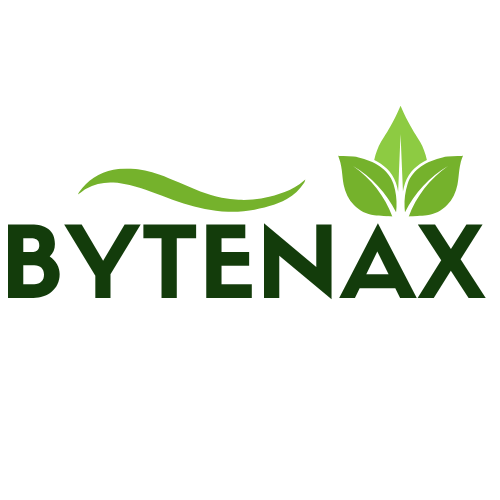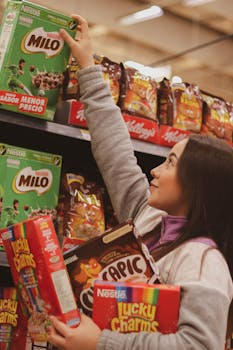Anúncios
Digital tools have revolutionized the way we approach food, from planning meals to grocery shopping and cooking. The integration of technology into our culinary practices has brought about significant changes that enhance convenience and efficiency.
As more people turn to digital solutions, the landscape of food consumption continues to evolve. With access to information at our fingertips, consumers are making more informed choices regarding their diets.
This article delves into the various ways digital tools are impacting food, exploring innovative technologies and their influence on health, sustainability, and accessibility.
Online Grocery Shopping
Online grocery shopping has transformed the shopping experience for many families. With just a few clicks, consumers can access a wide variety of products without leaving home.
This convenience has been particularly beneficial for people with busy schedules, allowing them to save time and streamline their grocery lists. Furthermore, many platforms offer delivery options that save additional time.
Anúncios
Additionally, online grocery shopping empowers consumers to compare prices easily from different retailers. This transparency can lead to more budget-conscious decisions about food purchases.
Moreover, consumers can utilize apps that help track their shopping habits. As a result, many are becoming more mindful of their purchases and waste reduction.
According to recent studies, this trend shows no signs of slowing down, as more people increasingly rely on digital platforms for their grocery needs.
Anúncios
Meal Planning Applications
Meal planning apps have gained popularity in recent years, providing users with ways to organize their meals efficiently. These apps often include features for recipe searching and ingredient management.
By utilizing these applications, individuals can create weekly meal plans that cater to dietary preferences. Whether it’s vegan, gluten-free, or family-friendly, there’s a meal plan for everyone.
Meal planning tools also help minimize food waste, as they encourage users to purchase only what they need. This conscious approach to shopping is beneficial for both individuals and the environment.
Many apps offer nutritional information, allowing users to monitor their intake closely. This capability promotes healthier eating habits and boosts awareness around food choices.
Furthermore, meal planning can create family bonding time. Cooking together becomes an enjoyable activity, making meal preparation a more engaging experience.
Recipe Sharing and Social Media
The culinary world has been significantly impacted by social media platforms that allow users to share recipes effortlessly. Platforms like Instagram, TikTok, and Pinterest have become popular sources for food inspiration.
This easy accessibility fosters a sense of community among food enthusiasts. Users can exchange tips, experiences, and favorite recipes with a global audience.
Additionally, video tutorials provide visual aids that simplify cooking for beginners. These step-by-step guides empower aspiring chefs to tackle new dishes with confidence.
Influencers have also entered the culinary scene, showcasing diverse recipes that cater to various diets and preferences. This exposure encourages varied eating habits and experimentation in the kitchen.
Consequently, the sharing of recipes online keeps traditional and innovative cooking techniques alive, promoting cultural exchange and diversity through food.
Digital Food Delivery Services
The rise of digital food delivery services has changed the landscape of dining out. With platforms like DoorDash and Uber Eats, enjoying a meal from favorite restaurants is now more accessible than ever.
This convenience caters to urban dwellers and busy professionals alike, offering an array of cuisines delivered straight to their doorsteps. Many consumers appreciate this time-saving option.
Moreover, digital delivery apps often feature user reviews and ratings, allowing diners to make informed decisions about their food choices. This transparency adds an extra layer of confidence when ordering food.
Additionally, many restaurants have begun to rely on these platforms as a substantial revenue source. This shift indicates a change in how the food service industry operates.
As a result, diners now have the luxury of exploring local culinary offerings with just a few taps on their smartphones. This accessibility enhances the dining experience significantly.
Health Tracking Technologies
Health tracking technologies have become increasingly popular among food consumers, especially those focused on wellness. Wearable devices, for example, can monitor dietary habits and nutrient intake.
These technologies empower users to set personal health goals while promoting a deeper understanding of their eating habits. Health-focused applications often provide insightful analytics about food choices.
Furthermore, many apps offer tailored meal suggestions based on individual health metrics. This customization aids users in meeting dietary needs while maintaining a balanced lifestyle.
In this way, tracking tools also help identify potential food intolerances or allergies. Users are better equipped to make informed decisions about what they consume.
Ultimately, this intersection of food and technology supports individuals in leading healthier lives while playing an essential role in nutrition education.
Sustainability and Food Technology
The conversation around sustainability has gained momentum due to digital tools that drive innovation in food production and consumption. Technologies like vertical farming and environmentally friendly packaging are emerging trends.
Digital platforms facilitate awareness and education about sustainable practices, making eco-conscious choices more accessible for consumers. Many now seek out local, organic products when shopping.
Moreover, apps that track carbon footprints associated with food choices enable users to evaluate their environmental impact. These tools help individuals understand the balance between consumption and sustainability.
Smart technology in food systems also promotes efficient resource use. It minimizes waste by optimizing supply chains, making food production more sustainable overall.
Consequently, the relationship between technology and sustainability promotes a healthier planet while meeting consumer demands for transparency and responsibility in food sourcing.
The Future of Digital Food Tools
The future of digital tools in the food industry indicates continued innovation and integration of technology. As artificial intelligence and machine learning evolve, they will further personalize the food experience.
Future advancements may include enhanced virtual cooking experiences and augmented reality meal prep, making cooking even more engaging and educational for users. These developments could transform culinary learning.
Moreover, as consumer preferences shift towards healthy and sustainable options, food tech solutions will focus on enhancing product offerings to meet these demanding needs.
Smart kitchens equipped with connected appliances could streamline meal preparation while providing tips through voice commands or interactive screens. This integration supports time efficiency in cooking.
The digital food landscape continues to evolve, reflecting a society that values convenience, health, and sustainability in its culinary practices.
Conclusion
The impact of digital tools on food has significantly reshaped our relationship with what we eat. From shopping to meal preparation, technology enhances efficiency and promotes healthier choices.
As we embrace and incorporate these digital solutions into our lives, the potential for innovation and sustainability becomes even more exciting. The culinary world is thriving in this digital age.
Looking ahead, the ongoing evolution of food technology will contribute positively to consumer experiences while addressing pressing global challenges. Overall, digital tools are revolutionizing the food industry.
By remaining informed and engaged with these developments, individuals can navigate their culinary journeys confidently. This transformation has the power to inspire healthier lifestyles for everyone.
The future of food is bright, and digital tools are at the forefront, shaping a new era of cooking, eating, and sustainability.



